A social media campaign constitutes a marketing strategy employed by brands to showcase and promote their products and services across various social media platforms.
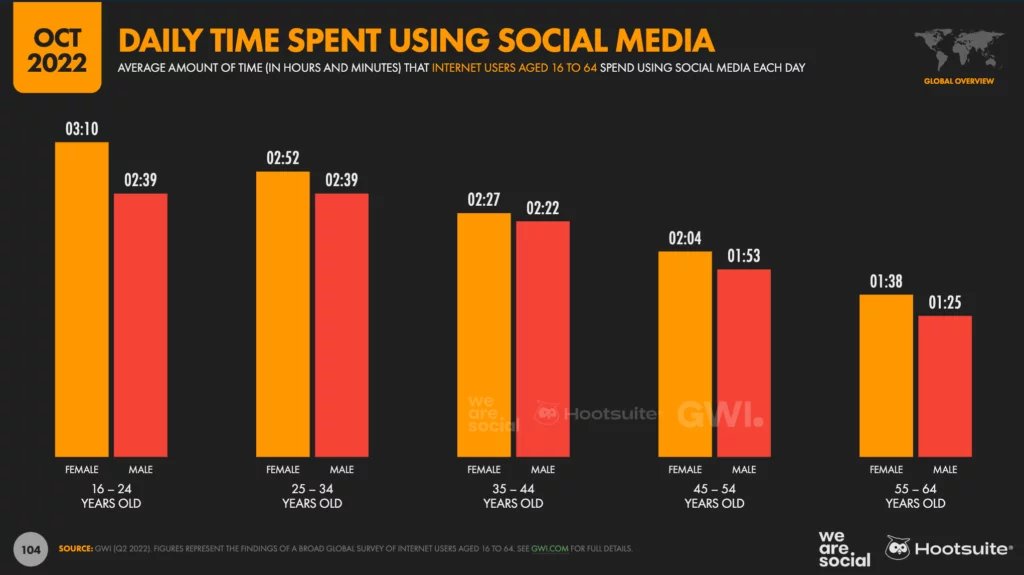
Effective social media campaigns not only enhance brand awareness but also serve as a means to convey the unique personality of a company, fostering a sense of loyalty among the audience. These campaigns may take the form of one-time initiatives or extend into long-term marketing endeavors.
Learn about social media tools here.
Top Social Media Campaigns of 2024:
1. Warner Bros.’ Barbie
According to a report by Variety, Warner Bros. allocated a staggering $150 million for the marketing of their upcoming 2023 Barbie movie. Despite this impressive figure, surpassing even the $145 million budget for the film’s production, the studio’s innovative “breadcrumb strategy” offers a valuable approach that any brand can adopt to ignite conversations on social media.
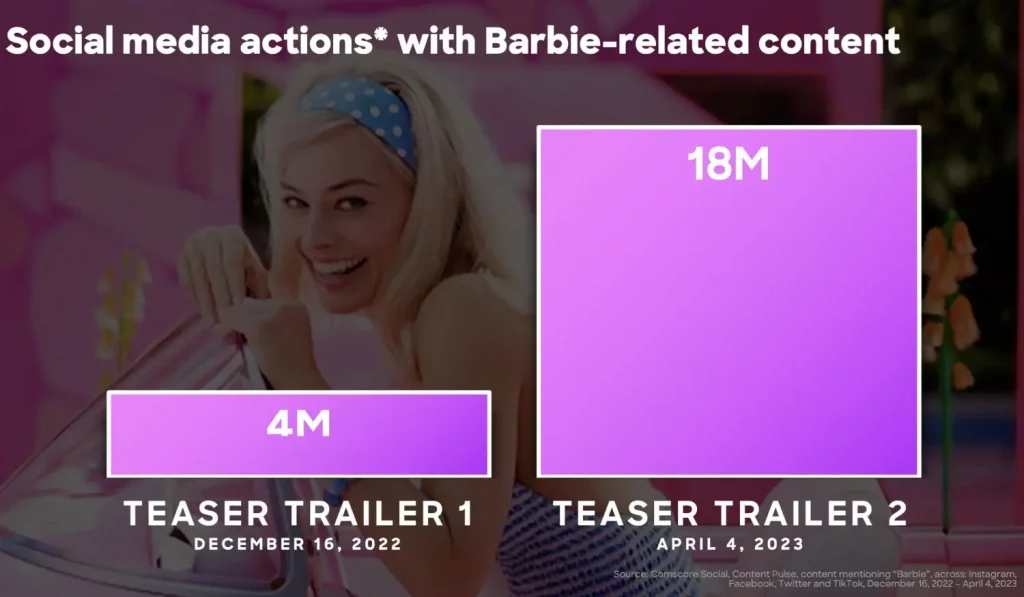
The essence of this strategy lies in strategically staggering content releases, extending engagement over an extended period. The first teaser trailer for the Barbie movie was strategically unveiled more than a year before the movie’s release, garnering approximately four million engagements across various social networks.
Building on this success, the second teaser soared to #28 on YouTube’s Trending videos within 24 hours and triggered a remarkable 18 million social media engagements. To further amplify the buzz, the Barbie marketing team introduced a complimentary AI-powered selfie-generator tool. This tool allowed users to craft personalized versions of the movie posters, creating a wave of user-generated content shared across social media platforms.
Even celebrities like Zooey Deschanel enthusiastically joined the campaign. This image generator not only mimicked the effects of influencer marketing but also effortlessly enlisted big names to effectively promote the movie. The resulting memes, stills from the movie, and user-generated content (UGC) from the public who witnessed the filming process all served as integral “breadcrumbs.” Notably, each piece of content contributed to building anticipation and interest in the movie.
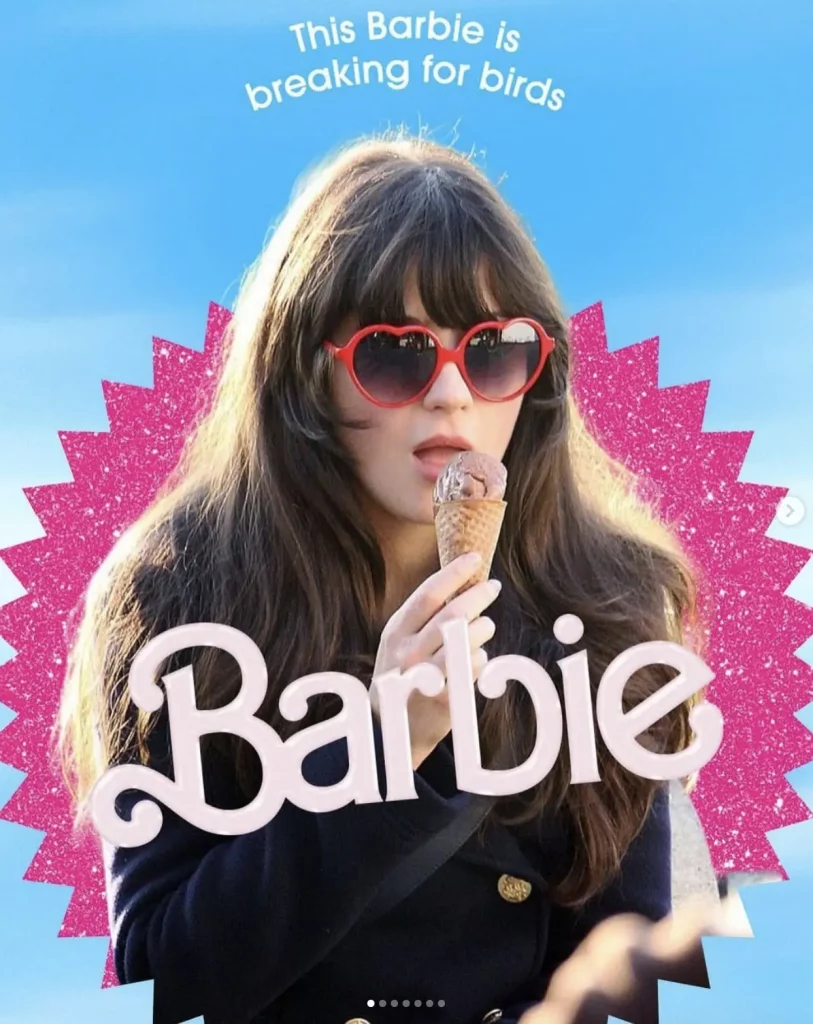
For instance, when Margot Robbie and Ryan Gosling were spotted filming in Los Angeles, social media users eagerly shared the behind-the-scenes gossip, adding to the storyline’s intrigue.
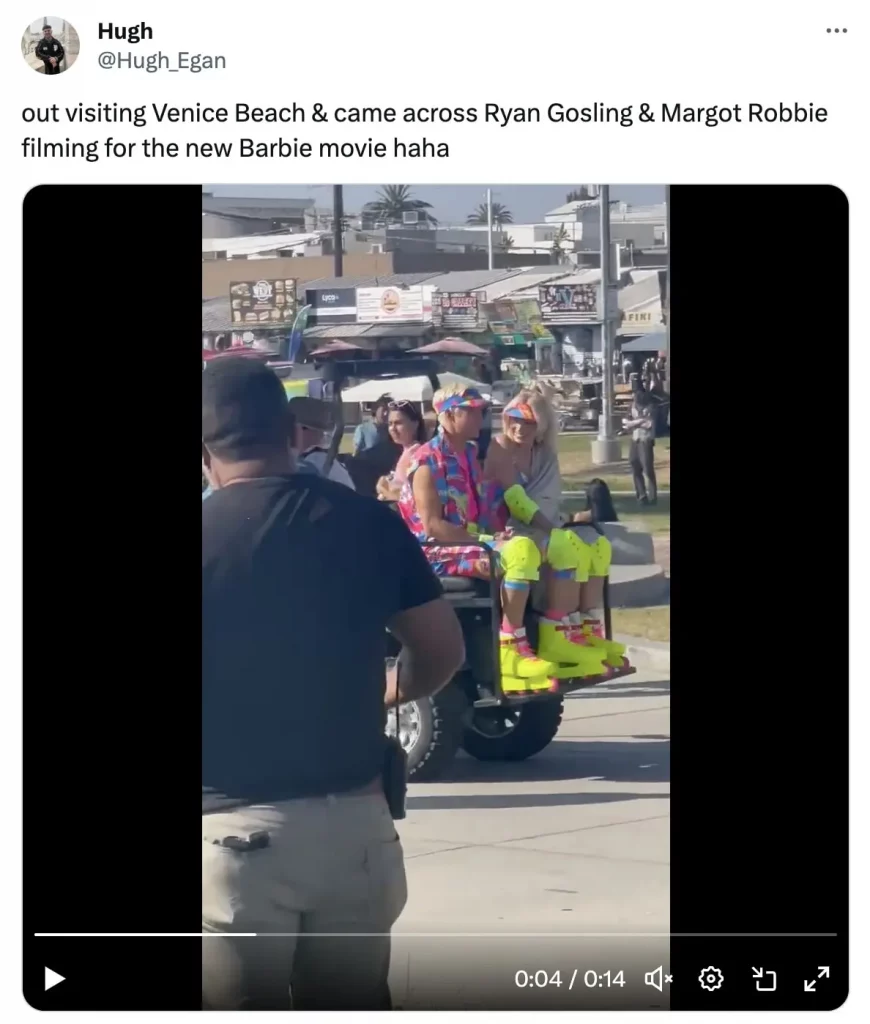
Josh Goldstine, Warner Bros.’ President of Global Marketing, humorously remarked, “Someone took a picture of a pink sunset and thanked the work of the Warner Bros. marketing department.”
Through the meticulous execution of their breadcrumb strategy, the Barbie marketing team crafted a prolonged, highly impactful social media campaign.
What you can do: Foster curiosity and conversations by strategically releasing content breadcrumbs leading up to your next social media campaign. Leverage tools like Semrush’s Social Poster for drafting, scheduling, and posting content across multiple social media platforms. The user-friendly calendar interface allows for content scheduling weeks in advance.
2. Dove’s Campaign for Real Beauty
In 2004, Dove pioneered the groundbreaking Dove Campaign for Real Beauty, marking a paradigm shift by featuring a diverse array of regular women in its marketing materials, a departure from the prevalent use of models. Over the ensuing decades, this pioneering strategy has maintained its potency, contributing significantly to the expansion of Dove’s social media following.
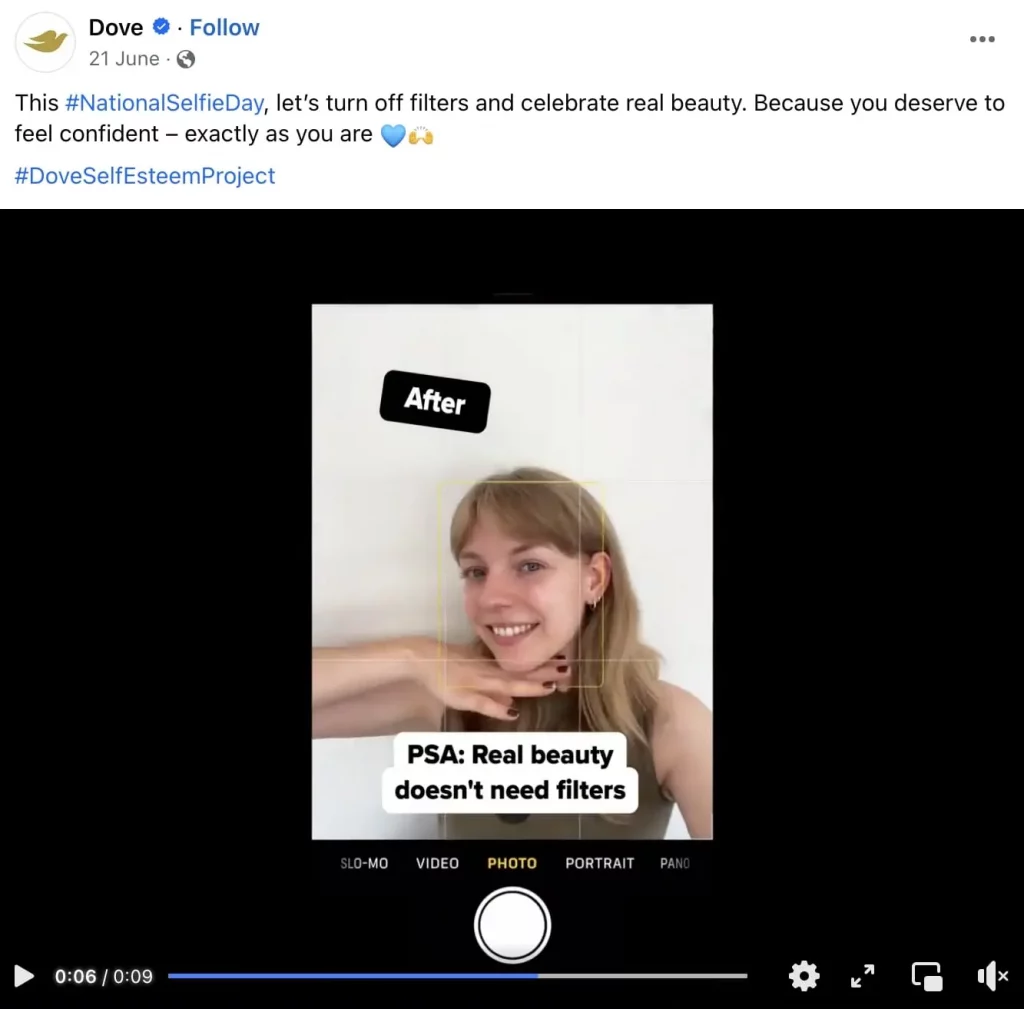
The utilization of authentic bodies in Dove’s campaign evokes a profound emotional response, championing the narrative that genuine beauty emanates from within. Today, Dove extends its impact beyond mere marketing by conducting educational programs such as The Self-Esteem Project, executed through social media platforms, prominently featuring the hashtag #DoveSelfEsteemProject.
The overarching objective of this social media campaign is to empower a quarter of a billion young people globally, fostering greater self-confidence by the year 2030, all while strategically reinforcing the brand’s position in the soap market.
Dove’s Facebook post promoting young women’s beauty without filters, accompanied by the hashtag #DoveSelfEsteemProject, exemplifies the ongoing resonance of this initiative.
Several impactful hashtags from the campaign, some still actively used, include:
- #ShowUs: A compilation of selfies and user-generated content from women and non-binary individuals.
- #NoDigitalDistortion: Applied to images to assert that Dove refrains from altering bodies and skin through digital manipulation.
- #NoLikesNeeded: Designed to convey to younger social media users that self-approval is the only validation that truly matters.
- #PassTheCROWN: An initiative aimed at combatting race-based hair discrimination.
Dove’s Instagram account bio succinctly encapsulates its enduring values, stating, “Let’s change beauty together and help raise self-esteem in the next generation.” Since the campaign’s inception in 2004, Dove has consistently showcased natural women and bodies, firmly committing to abstain from distorting images.
What you can do: Identify the core values cherished by your target audience and construct campaigns that align with these principles. Utilize tools such as Semrush’s Audience Intelligence to segment your audience effectively. This tool provides an in-depth summary of each audience group, incorporating keywords from user bios, key influencers, popular hashtags, and overall demographic trends. Employing precise segmentation enables you to tailor distinct social media campaigns to diverse demographics within your audience.
3. Apple’s #ShotOniPhone
Apple’s enduring #ShotOniPhone campaign seamlessly blends user-generated content (UGC) with impactful out-of-home advertising. This innovative initiative allows iPhone users to hashtag their social media content, presenting them with the opportunity to showcase their photos on Apple’s iconic billboards.
An exemplary billboard from Apple’s summer campaign is featured below. In a departure from conventional approaches that emphasize the device itself, Apple strategically spotlights the captivating photos captured by its users.
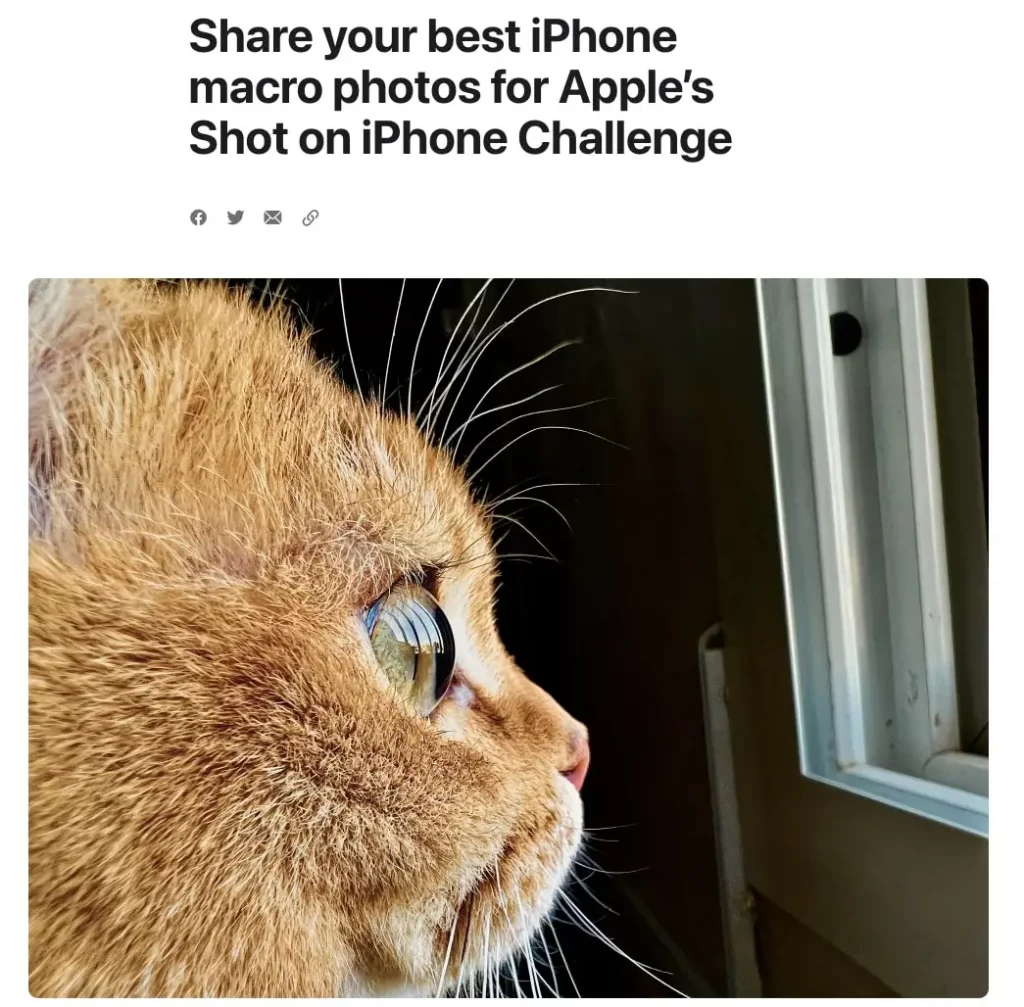
In 2022, Apple urged users to share their finest macro photos as part of that year’s challenge. The social media campaign celebrated the enabling factors behind impressive 2 cm macros: a new lens design, autofocus capabilities in the Ultra Wide format, and enhanced software functionalities.
This campaign masterfully showcased the superior quality of the latest iPhone models without resorting to overtly promotional tactics. It ingeniously incorporated gamification by transforming the call for photo submissions into a captivating challenge, stimulating active participation from the user community.
The campaign’s success is evident in the vast repository of content under the #ShotOniPhone tag, amassing over 29 million Instagram posts.
To partake in the campaign, users are prompted to tag their photos on Instagram or submit entries on platforms like Twitter, Weibo, or through email. Submission prerequisites include the original shot to validate authorship and easily accessible contact details, facilitating communication with Apple’s advertising agency.
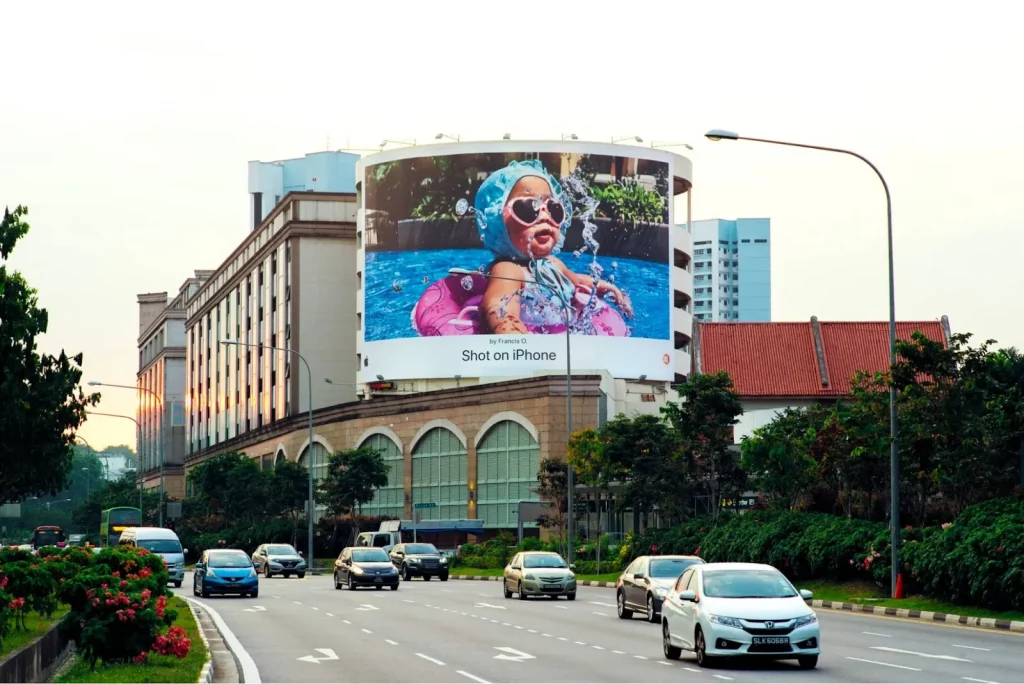
Notably, the billboards exclusively showcase images captured by the latest iPhone models, creating a compelling narrative that fuels increased demand for these cutting-edge devices.
What you can do: Cultivate audience engagement by organizing a UGC-inspired competition, challenge, or game. Develop a captivating hashtag around your content to facilitate easy tracking and monitoring. If you need assistance in identifying relevant keywords, leverage the comprehensive database of over 24.6 billion keywords for global research offered by Semrush’s Keyword Magic tool.
4. Spotify Wrapped
Spotify Wrapped is an annual compilation summarizing users’ most-played music and podcasts, presented in a personalized, in-app format designed for easy sharing on Instagram Stories.
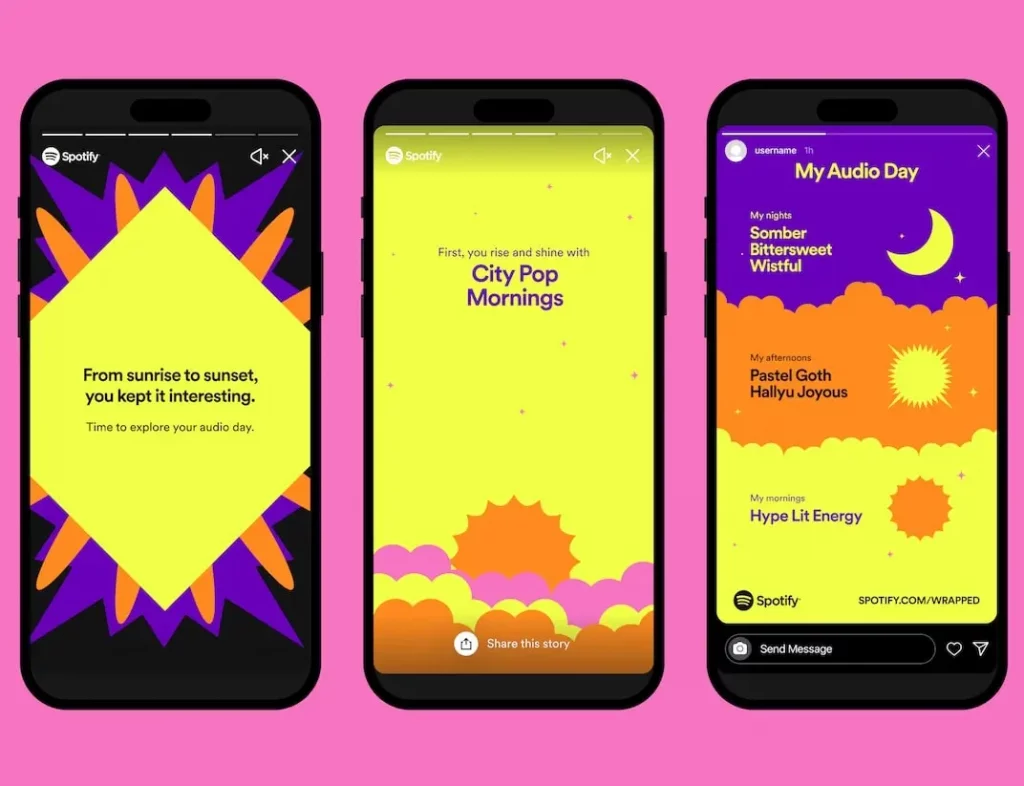
Each year introduces different categories and designs while maintaining a consistent structure. Typically, the interactive summary encompasses:
- Total time spent listening
- Most-played artists, songs, and genres
- Favorite podcasts
- New artists and genres
Users often share their Wrapped screenshots on various platforms, with Instagram Stories being a popular choice due to their 24-hour visibility (unless saved as a Highlight). X (formerly Twitter) users also actively participate by showcasing their Wrapped summaries on the platform.
The buzz around Spotify Wrapped extends beyond its annual December release. Users engage in discussions throughout the year, utilizing keywords such as “Wrapped,” “Spotify Wrapped,” or the official hashtag #SpotifyWrapped.
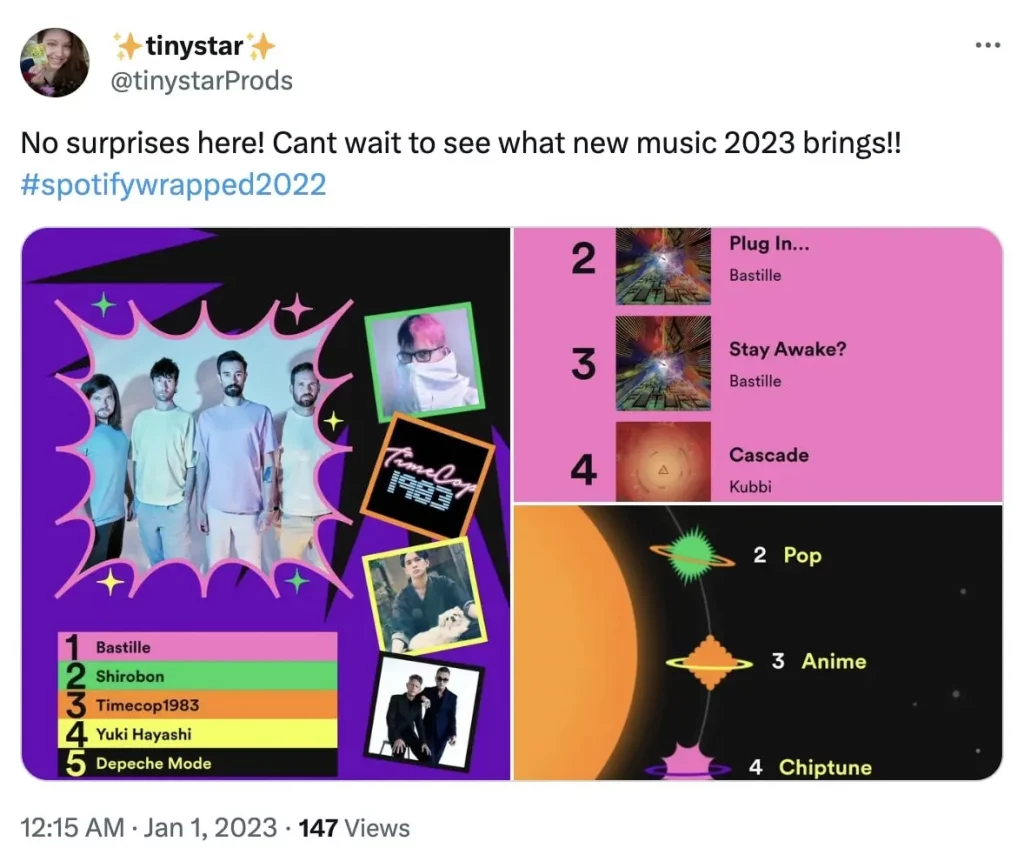
Spotify deliberately designs these internal metrics to be highly shareable. Users can effortlessly share their music highlights on Instagram without the need for resizing or reformatting, contributing to the widespread popularity of the feature.
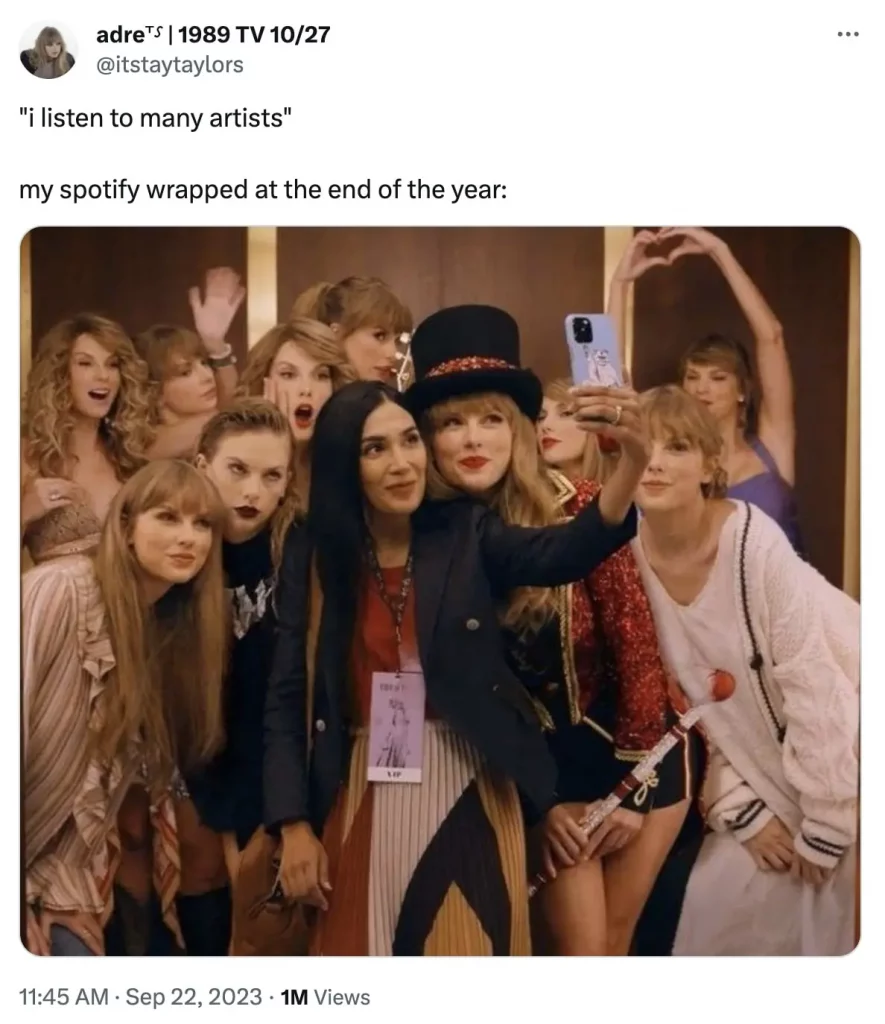
Furthermore, Spotify Wrapped has evolved into a continuous engagement game for users. They actively listen to more of their favorite artists and playlists in hopes of prominently featuring in the following year’s Wrapped summary.
What you can do: Provide personalized and shareable content that incentivizes increased usage of your product or service. Collaborate with influencers to enhance your content creation strategy. Utilize Semrush’s Influencer Analytics tool to identify suitable brand ambassadors and gain insights into competitors’ influencer strategies.
5. Patagonia’s Mission-Driven Content
On Instagram, the brand shares a snapshot from a recent March to End Fossil Fuels protest, explicitly endorsing the cause and providing a link to a relevant petition in its bio.
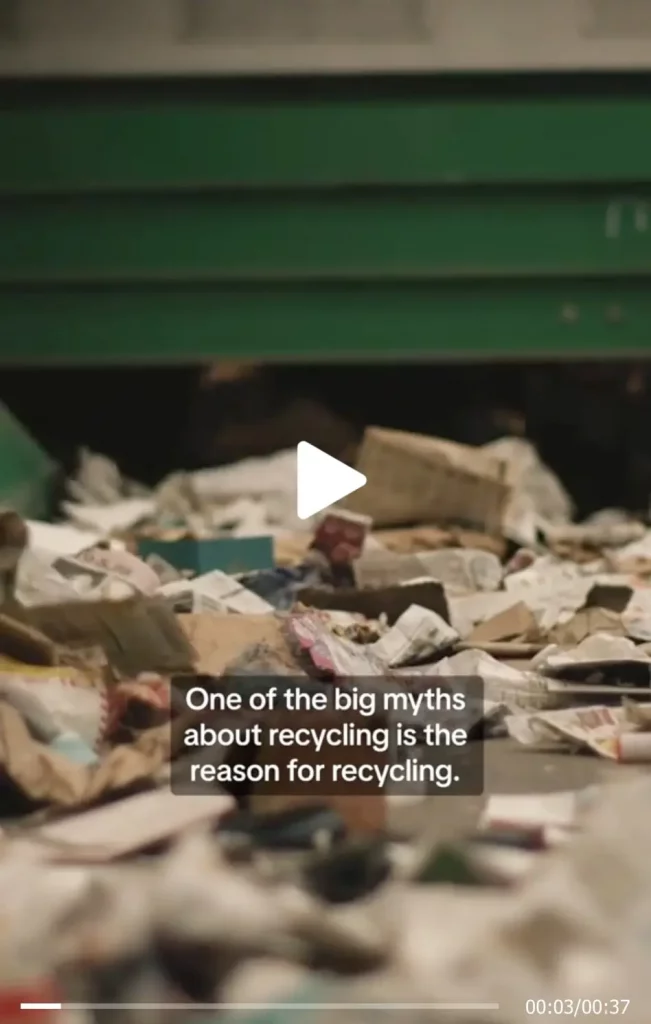
Similarly, on X, Patagonia shares another excerpt from a short film elucidating the impact of dams on greenhouse gas emissions.
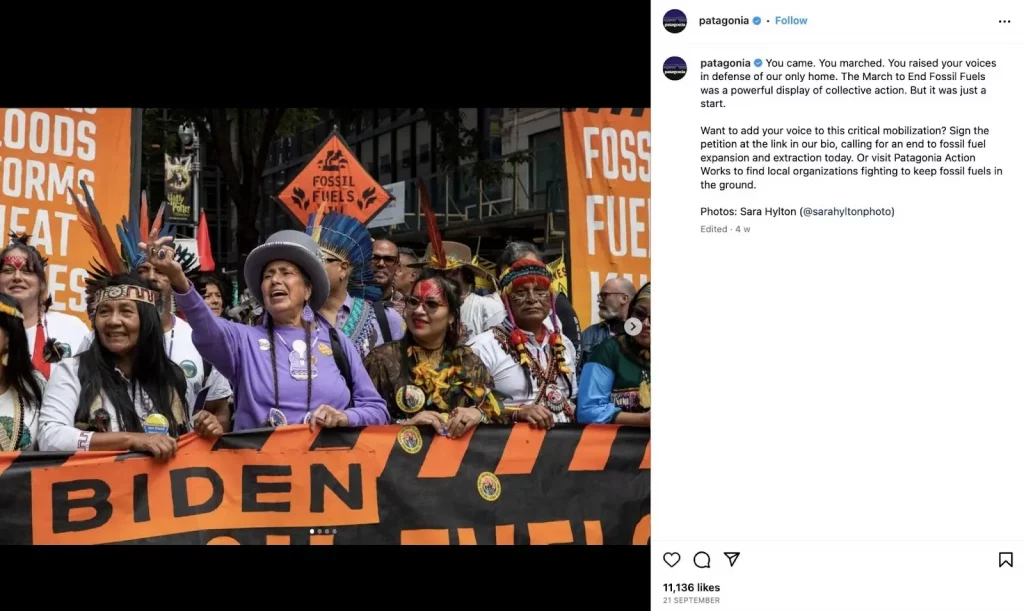
Patagonia has long been committed to user-generated content (UGC) and vocal advocacy for its principles. Although the brand occasionally touches upon topics like its manufacturing process on social media, it refrains from overt sales pitches or making products the focal point of its posts.
In lieu of traditional marketing, all messages and calls to action (CTAs) pivot around environmental protection and challenging consumerism. The brand fearlessly speaks out on issues it deems crucial, as exemplified by a statement elucidating the rationale behind boycotting Facebook ads starting in 2020.
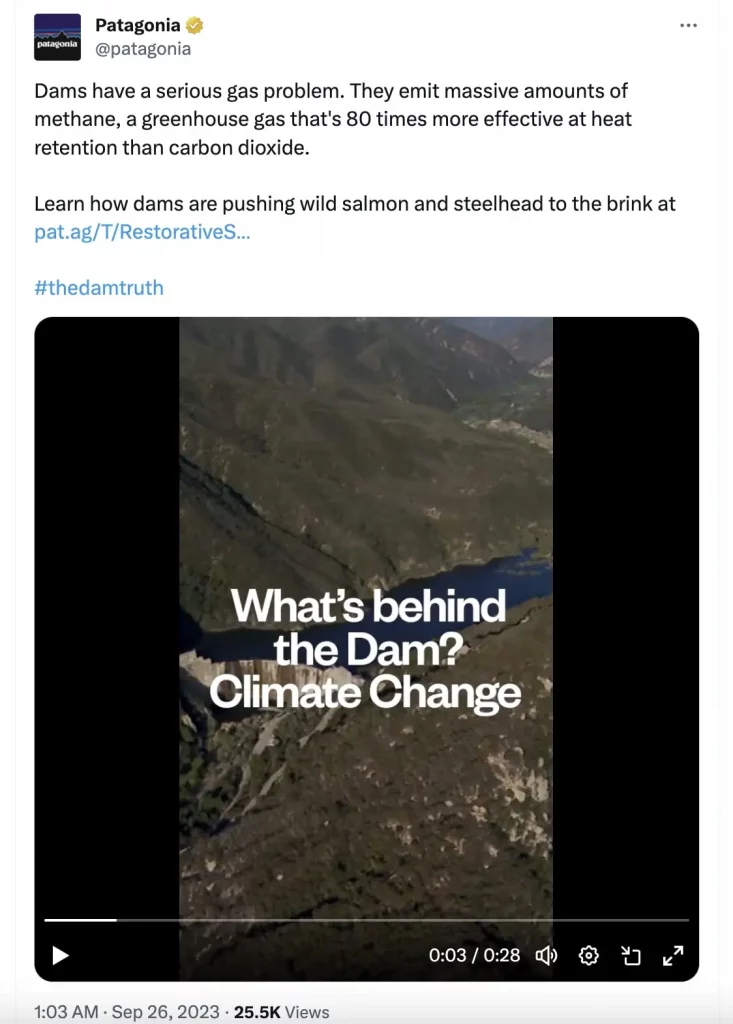
While this bold strategy might not be universally applicable, it underscores the potency of prioritizing a mission over product-centric messaging.
What you can do: Emphasize the value your product brings rather than fixating on the product itself. Champion global social causes or nonprofits aligned with your mission. Experiment with Semrush’s AI Writing Assistant tool to generate diverse content types across 28 languages using 75 AI-driven content creation tools.
6. Starbucks Seasonality
Starbucks adeptly tailors its social media approach and content to align with the seasonal offerings on its menu, fostering a sense of community and shared experiences among its customers.
A noteworthy aspect of this approach is prominently featured on its TikTok feed, where nearly every video showcases real individuals, including TikTok users, Starbucks staff, and celebrities. This deliberate blend visually showcases the brand’s seasonal products, leveraging user-generated content to convey authenticity and relatability.
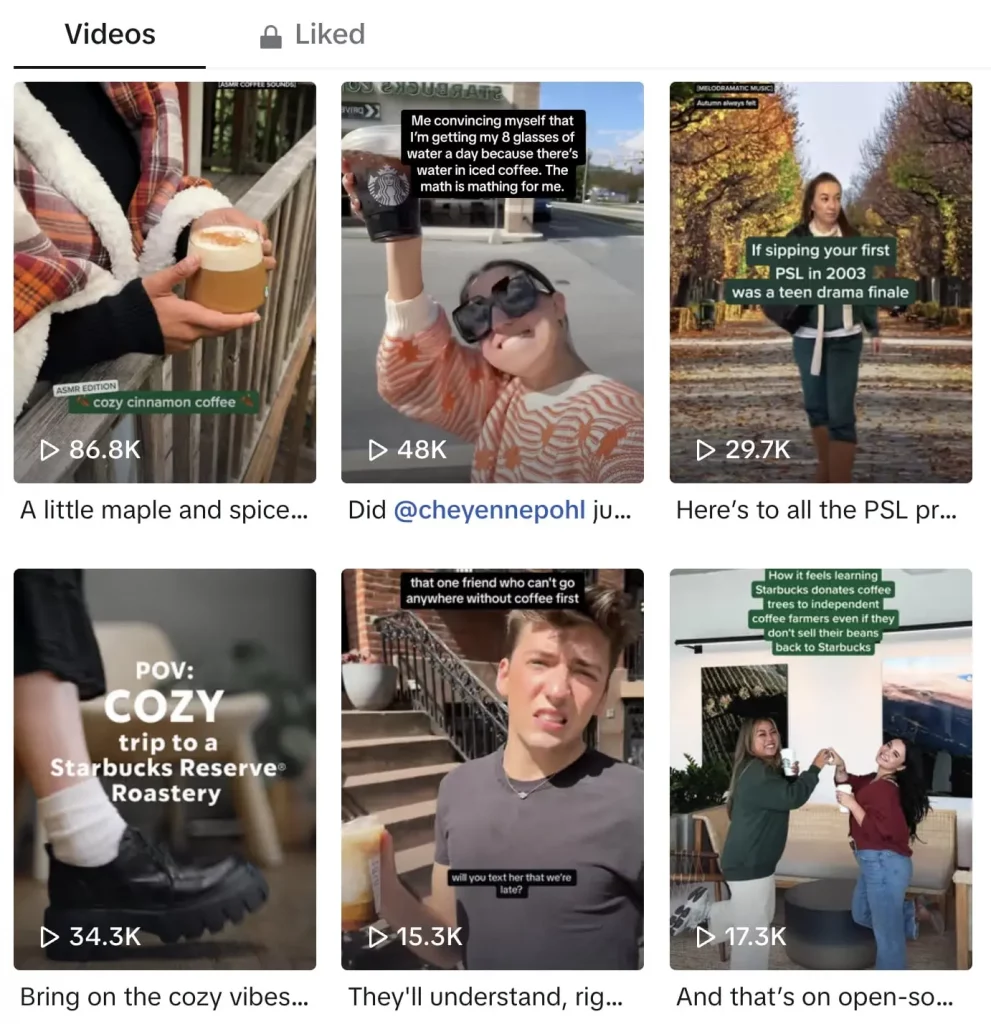
This human-centric social media campaign serves a dual purpose: leveraging social proof by depicting people similar to the audience enjoying Starbucks’ drinks, food, and ambiance, and instilling a Fear of Missing Out (FOMO) as viewers become conscious of the limited-time nature of seasonal offerings, urging them to visit their local Starbucks promptly.
Throughout October, the content strategically incorporates references to “pumpkin spice,” “fall,” or “Halloween.” An illustrative example is a video where a customer enthusiastically introduces the new fall menu items, embodying Starbucks’ famed pumpkin-flavored beverages and the diverse range of individuals who savor them.
[Customer video on trying Starbucks new fall menu items](link to the video)
This seasonal strategy extends throughout the year, adapting to the specific offers and deals of each season. Starbucks introduces summer refreshers and winter peppermint mochas, emphasizing feelings of well-being and nostalgia.
Diversifying its content strategy, Starbucks alternates between Reels and still images in its daily posts, providing visually appealing content to keep its audience engaged and accommodating different viewing preferences within the algorithmic landscape.
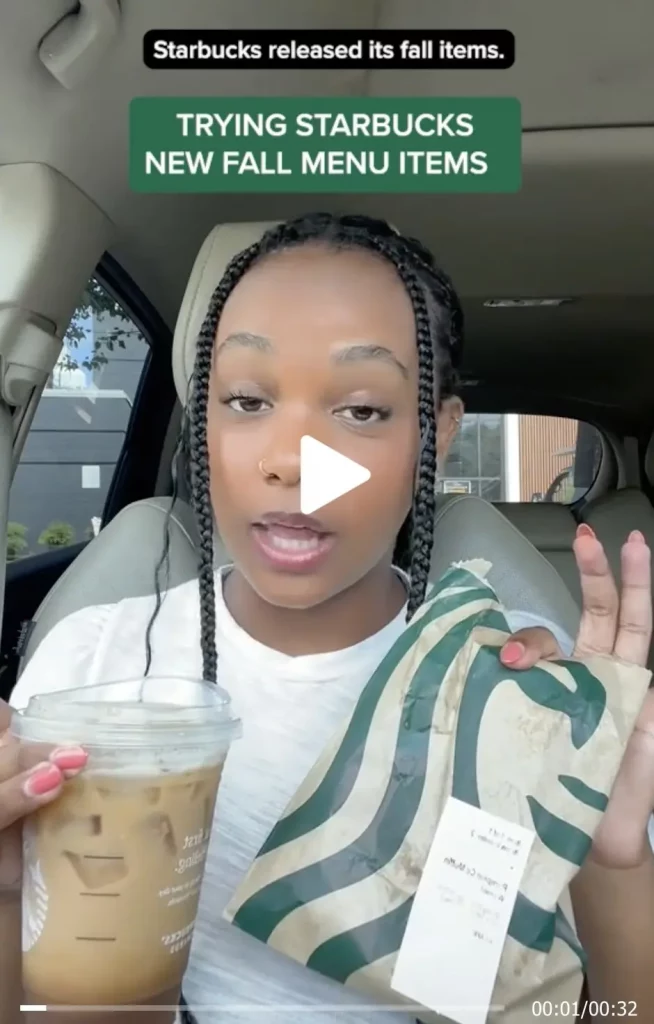
The emphasis on seasonality is further extended to include posts celebrating cultural events, such as an Instagram post commemorating Hispanic Heritage Month. This not only aligns with Starbucks’ values but also reinforces a sense of community and warmth.
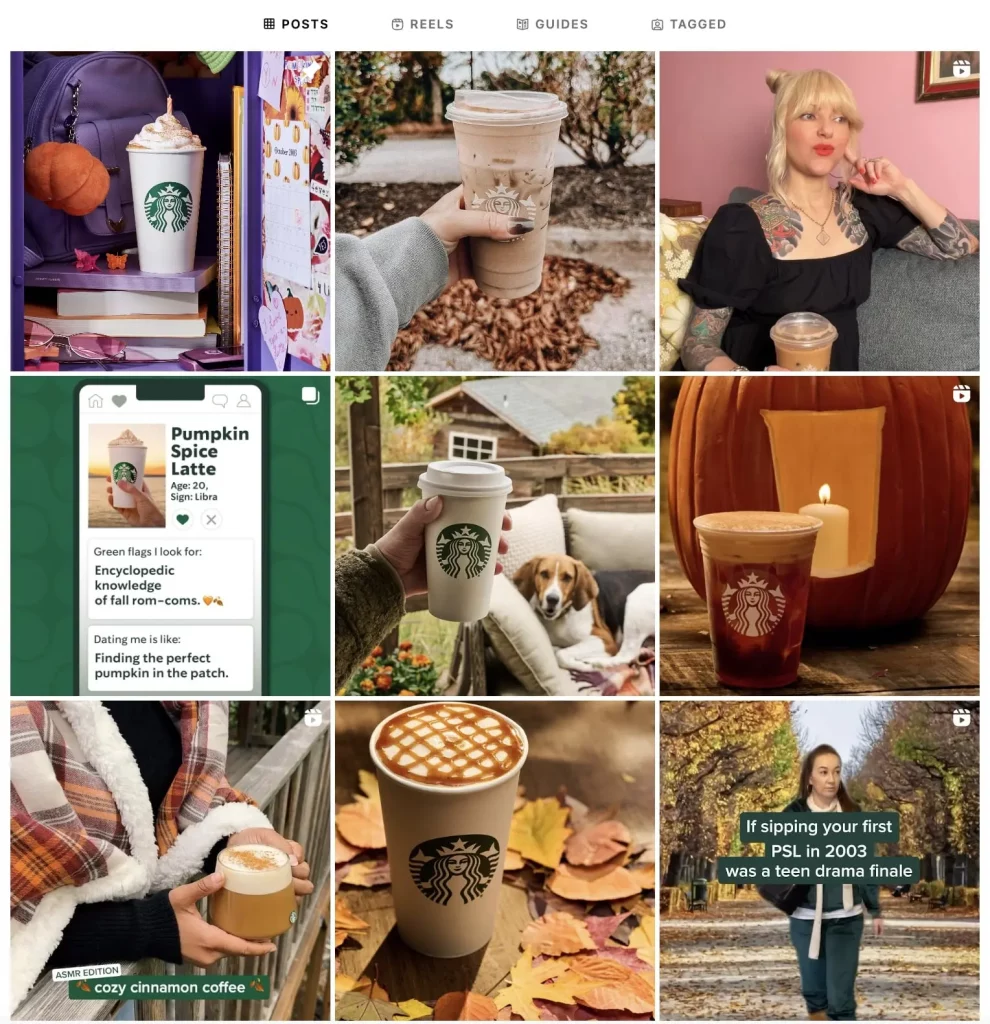
What you can do: Generate a sense of urgency by highlighting limited-time offers tied to events, seasons, and holidays. Ensure that your brand values permeate through campaigns and social interactions. Simplify seasonal banner creation with Semrush’s Instant Banner Generator tool, automating the process across various formats (Facebook, Instagram, LinkedIn, Twitter) and eliminating the need for advanced design skills.
7. Airbnb’s Engaging Storytelling
Airbnb has masterfully adopted a narrative approach to forge a deep emotional bond with its audience, employing storytelling to illuminate the advantages of its services for both guests and hosts. Recently, the company executed two concurrent digital marketing campaigns.
In one campaign, Airbnb extended invitations to photographers, encouraging them to experience the service as guests and capture moments during their stays. Co-founder and CEO Brian Chesky introduced this innovative social media advertising strategy through a video on his X account.
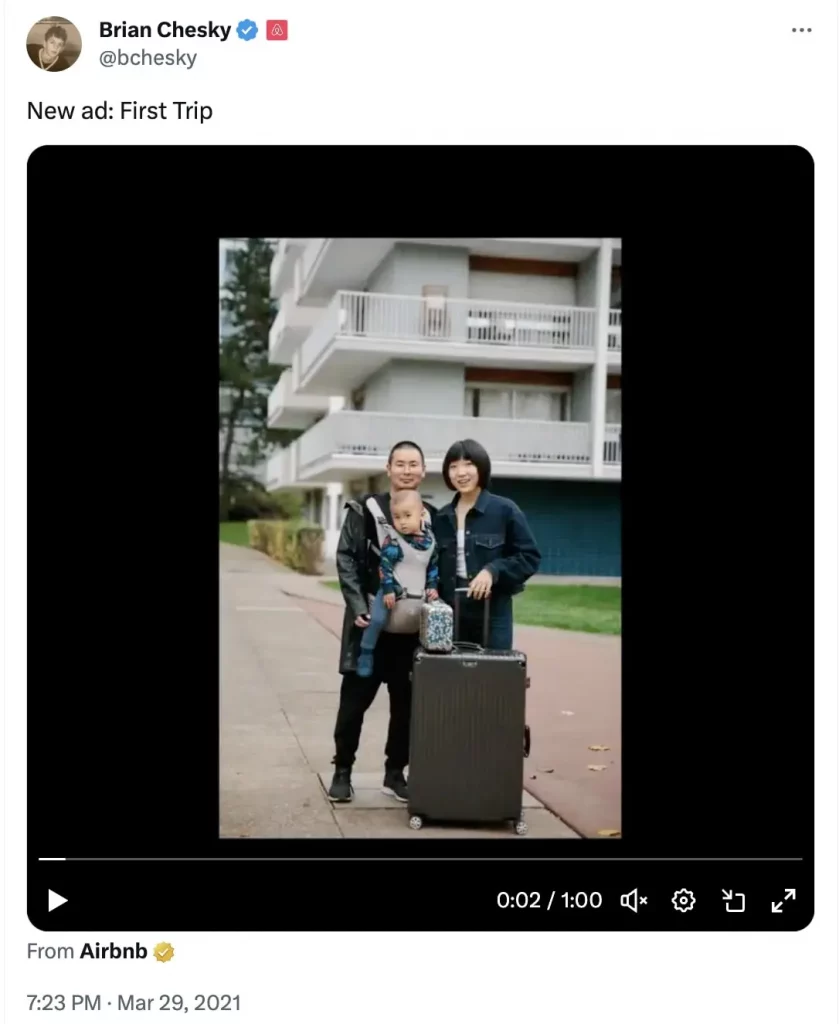
Despite compensating artists for their trips, Airbnb presented the audience with seemingly spontaneous snapshots of families and friends on vacation. By curating a repository of high-quality, user-generated content, Airbnb effectively wove the narrative of extraordinary getaways.
The company compiled these snapshots into engaging social posts and video ads, adopting a documentary-style approach from the guests’ perspectives, creating a natural and immersive experience for new audiences.
Simultaneously, Airbnb addressed hosts by narrating stories through imagery, strategically featuring available homes on its Instagram content. With over 5 million followers, this strategy not only enhances property visibility but also attracts potential hosts to join the platform.

In a recent development, Airbnb experimented with documentary-style editing for home visuals, aligning with the photographers’ campaign format. The white border effect, reminiscent of visitors’ photos, contributes to the allure of the showcased properties, offering a glimpse into the enchanting experiences guests can anticipate and providing inspiration for hosts.
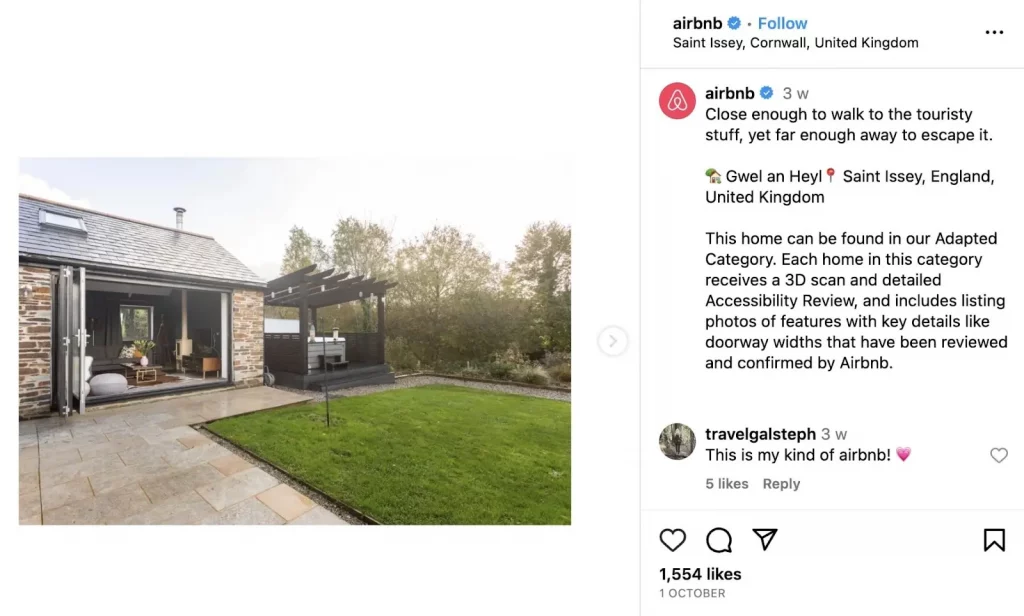
The strategic use of split captions caters to both audiences. For instance, a caption like “Close enough to walk to the touristy stuff, yet far enough away to escape it” encapsulates the guest experience, while the bottom half, “Each home in this category receives a 3D scan and detailed Accessibility Review,” outlines the benefits for potential hosts considering listing their homes in the same Airbnb category.
What you can do: Provide your audience with a captivating preview of their brand experience using high-quality visuals. Expedite the creative process with Semrush’s Instant Video Creator tool, allowing you to quickly convert blog posts into videos, customize and edit existing video content, and translate videos into more than 20 languages.
8. ASOS Empowering Turnaround
ASOS skillfully transformed a potentially negative social media post into a positive narrative, reaping extensive free PR in the process.
Thea Lauryn Chippendale shared a screenshot of a derogatory Tinder message criticizing a dress she wore, coincidentally purchased from ASOS, in one of her profile photos.

The post quickly gained viral momentum. As fellow users praised the dress and inquired about its origin, ASOS seized the opportunity to not only support Thea but also celebrate her fashion choice.
The British retailer reached out to Thea privately, expressing interest in utilizing her user-generated content on the product page since the dress was still available for purchase.

Thanks to Thea’s candidness on social media and ASOS’s attentive social listening, the incident garnered significant attention online. Numerous news outlets picked up the story, catapulting Thea into the official role of the dress model on ASOS’s website.
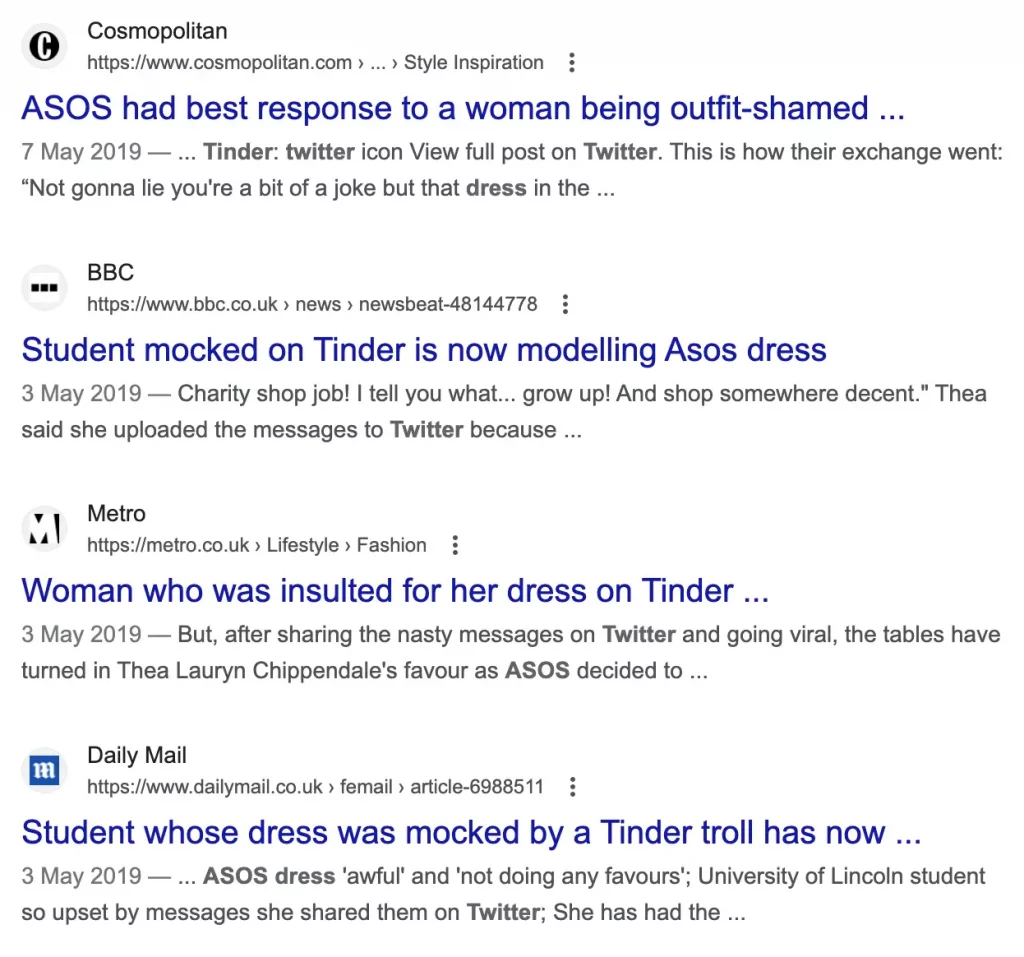
What you can do: Monitor social media closely for brand or product mentions; even casual remarks can lead to unexpected outcomes. Utilize Semrush’s Topic Research tool to identify popular subtopics and highly shared headlines related to a specific subject. Employ the Media Monitoring app by Brand24 to track brand mentions across platforms such as TikTok, YouTube, Telegram, and Reddit.
Conclusion:
In the dynamic landscape of social media, brands continually innovate to create impactful campaigns that resonate with audiences. The eight social media campaigns explored in this blog exemplify creativity, engagement, and strategic thinking. Whether it’s leveraging user-generated content, embracing influencer collaborations, or weaving compelling narratives, these campaigns showcase diverse approaches to achieving success in the digital realm. As brands navigate the ever-evolving social media sphere, these campaigns serve as a wellspring of inspiration. From interactive strategies to the power of user-generated content, each case study illuminates the potential for creating memorable connections with audiences. The key takeaway is the importance of staying attuned to trends, embracing creativity, and continually refining strategies to leave a lasting impression on the digital landscape.
FAQs on Social Media Campaigns:
What metrics should be considered for measuring social media campaign success?
Beyond likes and shares, metrics like reach, impressions, click-through rates, and conversions are crucial indicators of social media campaign success. Analyzing these metrics provides a comprehensive view of audience engagement and the impact of the campaign.
How can brands create compelling narratives in social media marketing?
Crafting compelling narratives involves understanding the brand’s identity, values, and the emotions they want to evoke. Storytelling should be authentic, relatable, and aligned with the brand’s overall message. Multimedia elements such as images and videos can enhance narrative impact.
How can brands handle negative comments on social media?
Brands should approach negative comments with transparency and professionalism. Responding promptly, addressing concerns, and offering solutions publicly or privately can help mitigate the impact of negative feedback. It’s crucial to maintain a positive online reputation.



